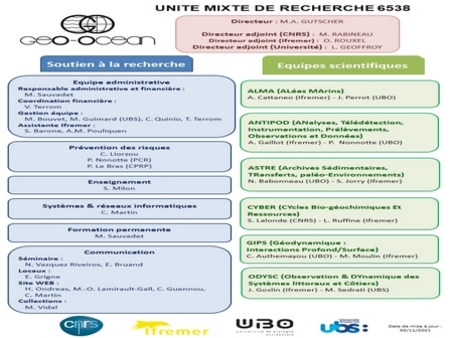MODAL project
MODAL project - MOnitoring seafloor Deformation and Assessing Landslide hazards associated with fluid pressures (Nice slope)
The main aim of the MODAL project is to carry out hazard and hazard analyses associated to sediment deformations in submarine environments prone to earthquakes, fluid activities and landslides. The study zone -the Nice Slope (France) - is nested in heavily populated areas, highly exposed to geohazards. The major challenging scientific question in this project concerns the coupling between fluids and sediment deformation in submarine environments.
Historically, the study area is sadly famous for the 1979 catastrophic submarine landslide which results in several casualties and infrastructural damage. Geotechnical and geophysical investigations carried out in late 2007 to the East of the 1979 landslide scar provide evidence for the possible occurrence of a new important sedimentary collapse and submarine landslide. Geophysical data acquired in the area show the presence of several seafloor morphological steps rooted to shallow sub-surface seismic reflections. Moreover, in situ piezocone measurements demonstrate the presence of several shear zones at the border of the shelf break at different depth below the seafloor. Both geophysical and geotechnical data suggest the start-up of a progressive failure mechanism and reveal the possible occurrence of future submarine landslide.
The MODAL project is built according to a typical scheme for hazard and risk analysis going from the understanding of underlying physical processes (causal, predisposition and triggering factors) through the detection of revealing factors (thanks to geophysical mapping and imaging, in situ measurements and monitoring) and hazard assessment (calculation of probability of a given danger to occur during a given time period).
More specifically, we propose to monitor the displacement rate field of the sediment and measure the fluid pressure to assess the probability of the slope failure, in response to gravity sliding, earthquake loading or excess pore pressure associated with rainfalls on the Nice region.
The study site has been actively studied during the last decade within the framework of national and/or European projects. We have already an important set of geotechnical, geological and geophysical data which facilitate the application and validation of the proposed schemes. The MODAL project will be conducted within the framework of fundamental research, technological developments and practical field applications.







